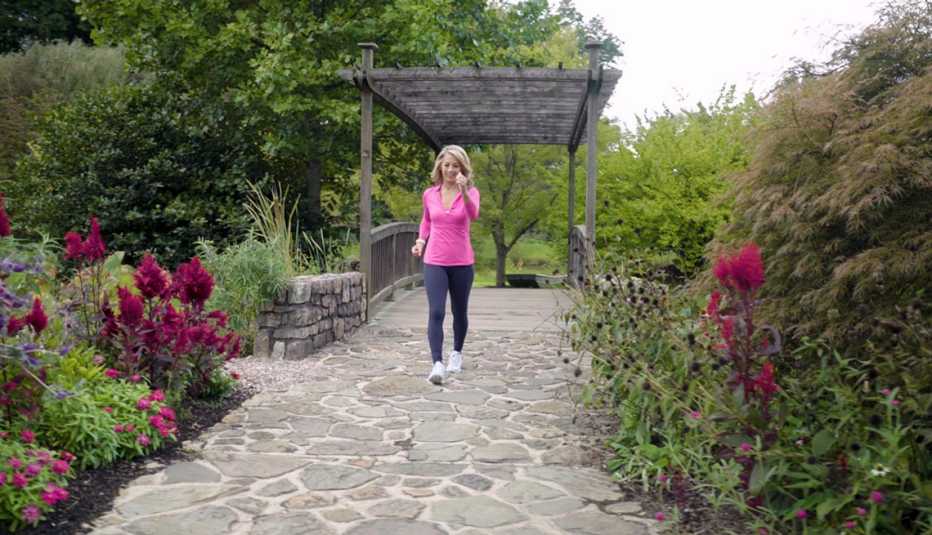AARP Hearing Center


The key to turning your walk into a calorie incinerator? Intervals! Working them into a half-hour walk, says fitness expert Denise Austin, “helps you burn up to 300 calories and boost your metabolism.” To hit those numbers, you do need to toggle between moderate and fast-paced levels of intensity. If you’re just starting off, work up to this by hitting a moderate pace for, say, five or 10 minutes after warming up. Gradually increase to 20 minutes over the course of a few weeks. At that point, the interval-based workout below will seem more doable.
- Start with a five-minute warm-up walk to slowly increase your heart rate. “Think of it as an easy walk, where your breathing is almost normal, and you can easily have a conversation,” says Austin, who considers this a level 1 or 2 on her “talk test,” which measures workout intensity.
- Then walk for five minutes at a moderate pace, which she considers a level 5 of intensity: “You should be able to easily finish a sentence but might wait a beat before starting a new one.”
- Next up: five minutes of power walking, which involves not only holding the same moderate speed but also slightly exaggerating your movements. And yes, that means pumping your arms like you mean business! At this level of intensity (what Austin considers a level 7), “Conversation should be more difficult, but not impossible.”
- The next five-minute interval is all about speed. Simply put, walk as fast as you can. “You may feel this in your hips more than in your arms,” Austin says, adding that you should look like you’re in a serious hurry to get somewhere. If you feel short of breath and can't finish a sentence, take it down a notch.
- With the hardest part of your workout over, switch now to five minutes of moderate walking. If you want to try some toning arm exercises, do those now. Austin recommends scissoring arms in front of you or pushing forearms out behind you.
- With your workout nearly complete, cool down for five minutes at a strolling pace. This should bring your heart rate down slowly.
- Finally, don’t forget to do a little post-walk stretching (for your lower back, quads, hamstrings, hip flexors and calves in particular) to maintain a full range of motion and prevent any soreness the following day.

































































More on Health
20 Questions to Ask When Dementia is Diagnosed
UCLA experts say information can help patients and families through next steps
Easy, Enjoyable Ways to Boost Heart Health and Lower Blood Pressure
How just stretching, taking baths or enjoying your coffee could lower your risk of heart attack and stroke
Monitoring Your Blood Pressure at Home
Why it's so important and how to do it right